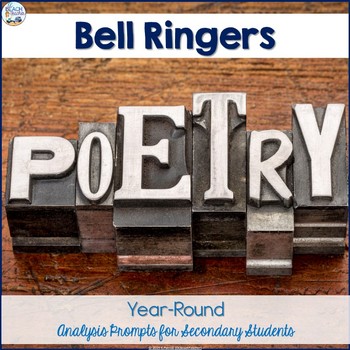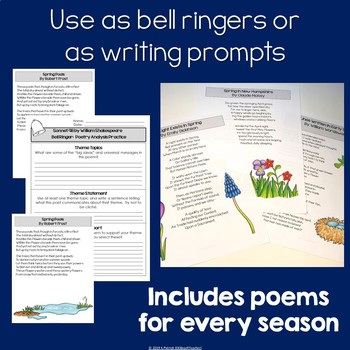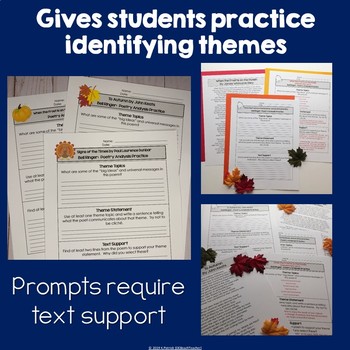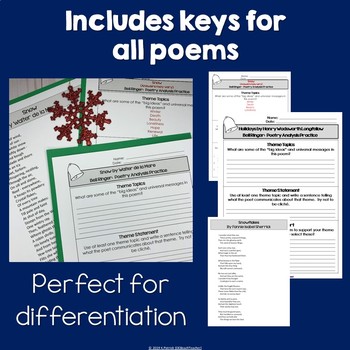Poetry Bell Ringers Bundle
- Zip
- Easel Activity
Products in this Bundle (7)
showing 1-5 of 7 products
Description
Help students analyze poetry with all of my poetry bell-ringer resources. Each handout requires students to provide theme topics, theme statements, and text support for their responses. It includes 32 classic poems and graphic organizers that are "print and go." Depending on how you choose to use these, each set of bell ringers could last one week or several months Furthermore, a blank graphic organizer allows students to choose their own poems to analyze.
This bundle includes 140 pages. Because of the text variety, they are also great for differentiating and meeting the needs of diverse learners. With its detailed instructions and answer samples, this resource would make an excellent lesson for a substitute if you will be out for an extended period of time.
The following poems are included:
- "If We Must Die" by Claude McKay
- "The Author to Her Book" by Anne Bradstreet
- "Hope" by Emily Dickinson
- "Sympathy" by Paul Laurence Dunbar
- "A Noiseless Patient Spider" by Walt Whitman
- "Ozymandias" by Percey Bysshe Shelley
- "The Man He Killed" by Thomas Hardy
- "I Wandered Lonely as a Cloud" by William Wordsworth
- "Invictus" by William Earnest Henley
- "Sonnet 18" by William Shakespeare
- "The Tide Rises, the Tide Falls" by Henry Wadsworth Longfellow
- "Theme for English B" by Langston Hughes
- "Richard Cory" by Edward Arlington Robinson
- "Stopping by Woods on a Snowy Evening" by Robert Frost
- "Annabel Lee" by Edgar Allan Poe
- "When the Frost is on the Punkin" by James Whitcomb Riley
- "To Autumn" by John Keats
- "Gratitude" by Henry Van Dyke
- "Gratitude—is not the mention" by Emily Dickinson
- "The Signs of the Times" by Paul Laurence Dunbar
- "Snow" by Walter de la Mare
- "Snowflakes" by Fannie Isabel Sherrick
- "The Old Year" by John Clare
- "The Snow-Storm" by Ralph Waldo Emerson
- "Holidays" by Henry Wadsworth Longfellow
- "Theme in Yellow" by Carl Sandburg
- "The Apparition" by John Donne
- "Haunted Houses" by Henry Wadsworth Longfellow
- "Spring Pools" by Robert Frost
- "Sonnet 98" by William Shakespeare
- "A Light Exists in Spring" by Emily Dickinson
- "Spring in New Hampshire" by Claude McKay
- "Lines Written in Early Spring" by William Wordsworth
Each resource is also available separately at the link below:
Meaningful and Memorable English Language Arts by © OCBeachTeacher
All rights reserved by author.
Limited to use by purchaser only.
Group licenses available.
Not for public display.





